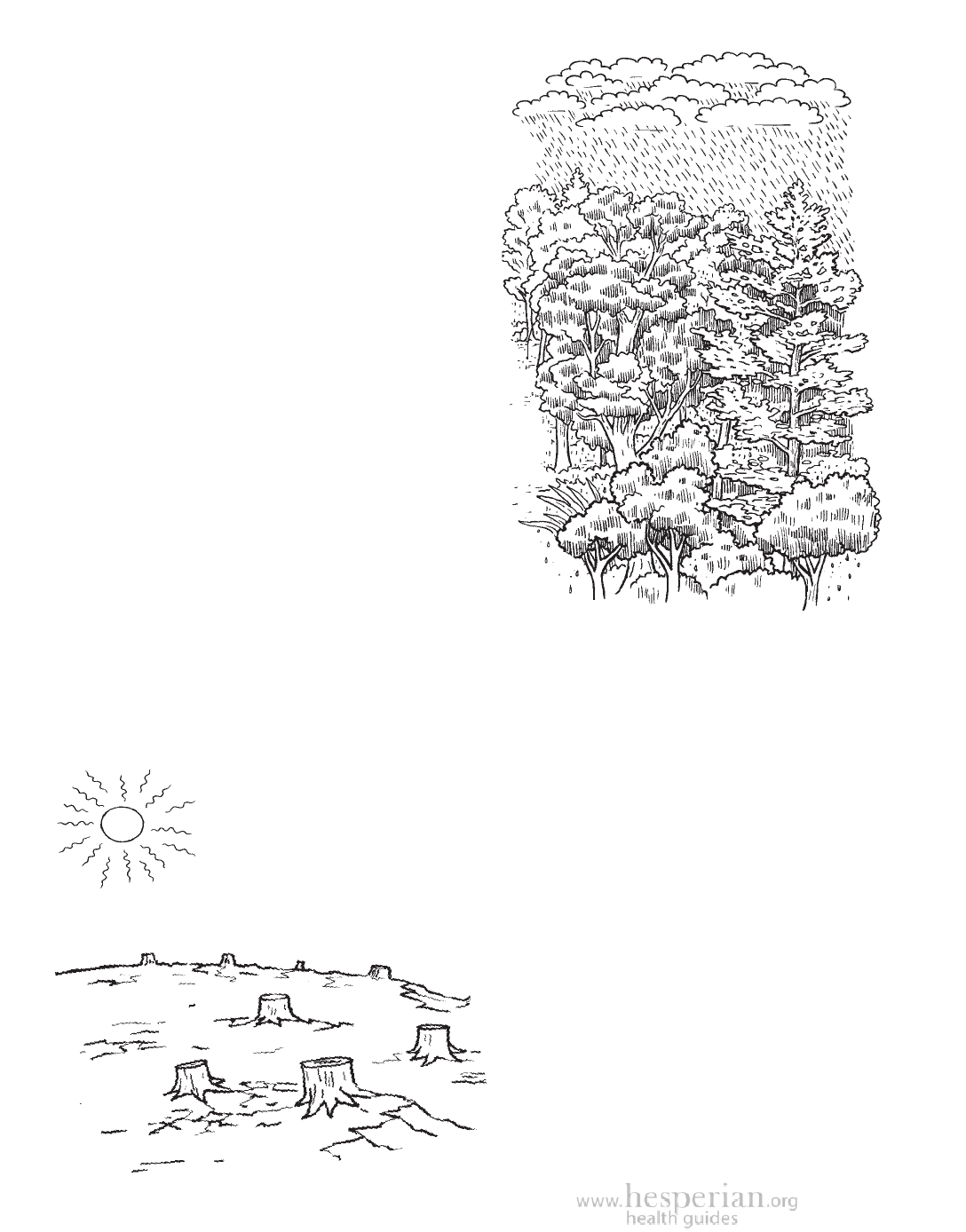
178 Forests
Forests and water
Some people believe trees attract rain and
hold water close to the ground. Others
believe trees use more water than they
make available, and that they compete
with crops. Depending on the kinds
of trees, where they grow, and other
conditions, both of these beliefs can be true.
Rich forest soils and deep tree roots act
as filters for water. When pesticides, heavy
metals, and other toxic chemicals pollute
surface water and groundwater, forests help
filter them out. The filtered water feeds our
wells, streams, and lakes, and keeps our
watersheds and the people who live there
healthy. Without forests to protect water
sources, there is less safe water for drinking
and bathing. For all of these reasons, it is
usually best to leave trees standing rather than
cut them down, especially if your water is clean
and abundant.
But some kinds of trees, especially trees that grow fast and are not native to
the area (see page 202), may use up water resources. For farmers and others who
want to protect water resources, it is important to notice how different types of
trees affect the water, and to make careful decisions about what trees to plant.
Forests and weather
Forests have important effects on the weather and the climate (the
weather in a place over a long period of time). They help make weather
less extreme by making warm air cooler and wetter, and making cold
air warmer and drier. Trees protect houses and crops from strong
winds and hot sun, and provide shelter from strong rains.
On a larger scale, forests fight global warming (see page 33)
by absorbing toxic pollution. This helps keep the climate of the
entire planet milder and the air and water
healthier. When we lose large areas of
forest, the threat of natural disasters
such as hurricanes, droughts, and
heat waves is increased.
Where forests have been cleared,
the weather becomes more extreme.
A Community Guide to Environmental Health 2012